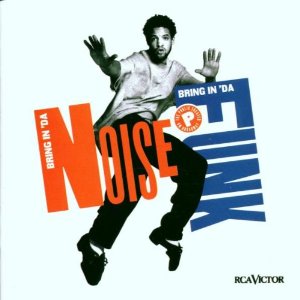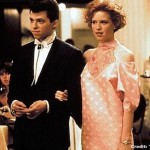 By Jae-Ha Kim
By Jae-Ha Kim
Chicago Sun-Times
October 17, 2002
Savion Glover’s lean, nimble legs whip across the stage in a way that defies speed. But it’s when he slows down that the viewer is able to fully relish each syncopated, seemingly effortless step. With his trademark locks flying and amplified tap shoes pounding away, he creates music as much as dance.
With “Bring in ‘Da Noise, Bring in ‘Da Funk,” the Broadway production that won the performer a Tony Award for choreography six years ago, Glover attempts to educate as he entertains. He tells the story of the African-American experience through a series of vignettes ranging from lynchings, to race riots, to everyday racism in the form of cabbies refusing to pick up black passengers.
Glover’s glorious dancing is the primary reason to see this production, which has returned to town for a brief run at the Cadillac Palace, but the supporting cast does a fine job in keeping the pace flowing. Glover’s precocious 12-year-old protege Cartier A. Williams is a delight, as are drummers Raymond A. King and Jared “Choclatt” Crawford. The pair’s ferocious bucket drumming is worthy of any rock concert, and they also exhibited good humor and charm during a bit where they drummed on a series of pots and pans strung around their bodies.
Serving as the show’s singing narrators, Lynette Dupree and Thomas Silcott were in fine form. Dupree’s expressive voice was especially effective during a evocative sequence dubbed “The Lynching Blues.”
Chicago plays a major role in “Bring in ‘Da Noise, Bring in ‘Da Funk.” Lured by the Chicago Defender’s promise of jobs and tolerance, blacks head to the North, only to find that life in the big city isn’t much different than it was in the South. On the plantations, it was against the law to drum on anything. In the factories, they have little time to find joy in anything, much less music.
At times, it’s easier to hear the tapping than see it. The dancers wear microphones on their ankles. Unfortunately, not all seats offer a good view of the fancy footwork.
During one solo turn, Glover danced on a darkly lit stage in front of three full-length mirrors. Rather than reflecting the beauty of his movement, the mirrors merely cluttered the set. And it was almost impossible (especially for those down front) to get a good view of his feet. Hearing Glover tap out precise movements without being able to fully see them was as frustrating as being at a concert and not being able to hear the singer.





